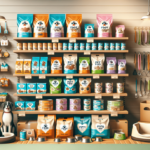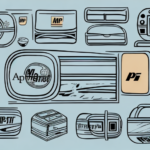How to Safely Ship Pet Food and Supplies
If you're a pet owner who enjoys purchasing pet food and supplies online, ensuring the safe shipment of your orders is crucial. Shipping these items requires careful consideration of several factors to guarantee they arrive in optimal condition and remain safe for your pets. This guide covers everything you need to know about securely shipping pet food and supplies, including packaging techniques, choosing the right shipping company, understanding regulations, and more.
Why It's Important to Ship Pet Food and Supplies Safely
Shipping pet food and supplies safely is essential for multiple reasons:
- Product Freshness and Integrity: Ensuring that pet food remains fresh and undamaged during transit preserves its nutritional value and effectiveness.
- Safety: Some pet supplies, like liquid medications or grooming products, can be hazardous if they leak or spill. Proper shipping prevents accidents and injuries.
- Regulatory Compliance: Adhering to shipping regulations ensures your products meet legal standards, preventing delays and potential fines.
- Preventing Contamination: Safe shipping practices minimize the risk of contamination, safeguarding both pets and humans from harmful substances.
For example, according to the U.S. Department of Agriculture, improper handling of pet food during shipping can lead to spoilage and bacterial growth, posing health risks to pets.
Understanding Shipping Regulations for Pet Food and Supplies
Shipping pet food and supplies involves navigating various guidelines and regulations that depend on factors like the carrier, destination, and product type. Key considerations include:
- Carrier Policies: Different carriers may have specific rules regarding packaging, labeling, and permissible items. Always review carrier guidelines before shipping.
- Destination Regulations: International shipments are subject to the destination country's import laws, which may restrict certain ingredients or product types. For instance, some countries prohibit the import of raw pet food.
- Product-Specific Regulations: Items like liquid medications require special handling and packaging to prevent leaks and ensure safety.
Stay informed by consulting authoritative sources such as the U.S. Food and Drug Administration (FDA) for up-to-date regulations on pet food shipments.
Packaging Materials for Safe Shipping of Pet Food and Supplies
Choosing the right packaging materials is critical to protect pet food and supplies during transit. Recommended materials include:
- Heavy-Duty Boxes: Sturdy boxes prevent crushing and provide a robust exterior for protection.
- Insulated Liners: These help maintain temperature-sensitive products, especially in extreme weather conditions.
- Bubble Wrap and Foam Peanuts: Cushion fragile items and prevent movement within the package.
- Leak-Proof Containers: Essential for liquid supplies to avoid spills and contamination.
According to a Packaging Strategies report from 2023, using the right packaging can reduce product damage by up to 30%, ensuring your supplies arrive safely.
Best Practices for Packing Pet Food and Supplies
Follow these best practices to ensure your pet food and supplies are packed securely:
- Tight Packing: Fill the box snugly to prevent items from shifting during transit.
- Cushioning: Use adequate cushioning materials like bubble wrap or foam peanuts to protect against impacts.
- Sealing: Use strong, durable tape to seal all edges and prevent the package from opening.
- Labeling: Clearly label packages with any special handling instructions, such as "Fragile" or "Keep Refrigerated."
For example, when shipping wet pet food, double-bagging can prevent leaks and preserve the product's integrity. Additionally, individually wrapping fragile items like glass bowls can avert breakage.
Tips for Choosing the Right Shipping Company for Pet Food and Supplies
Selecting a reliable shipping company is vital for the safe delivery of your pet supplies. Consider the following tips:
- Specialization: Choose carriers that specialize in shipping pet food and supplies, as they are more likely to understand and meet your specific needs.
- Handling Requirements: Ensure the carrier can accommodate special packaging or handling requirements for your products.
- Customer Reviews: Research customer feedback to gauge the carrier's reliability and customer service quality.
- Cost and Speed: Compare prices and delivery times across multiple carriers to find the best balance between cost-effectiveness and timely delivery.
Additionally, verify the carrier’s policies on lost or damaged packages and inquire about insurance options. Utilizing carriers that offer real-time tracking can provide peace of mind and allow you to monitor your shipment's progress.
The Importance of Proper Labeling and Documentation for Shipping Pet Food and Supplies
Accurate labeling and thorough documentation are crucial for the smooth shipping of pet food and supplies:
- Product Information: Labels should clearly display the product name, manufacturer, ingredients, and any relevant warnings or instructions.
- Documentation: Include necessary permits, certifications, and the carrier’s tracking number to facilitate seamless transit and customs clearance.
- Compliance: Proper labeling ensures compliance with regulations and aids in the correct handling of your products during shipping.
Accurate labels help pet owners make informed decisions and prevent potential allergic reactions or health issues caused by incorrect ingredient information. Comprehensive documentation also streamlines the identification and resolution of any shipping issues.
How to Handle Shipping Emergencies with Pet Food and Supplies
Despite thorough preparation, shipping emergencies can occur. Here's how to handle them effectively:
- Damage or Leakage: If you discover damage or leakage upon arrival, cease unpacking immediately. Document the damage with photos and contact both the carrier and seller promptly.
- Delays or Losses: Maintain a small backup supply of essential pet food and supplies to cover unexpected delays or losses.
- Communication: Stay in regular contact with the carrier to track your shipment and address any issues swiftly.
Having a contingency plan ensures that your pet's needs are met even when unforeseen shipping problems arise, minimizing stress for both you and your pet.
Cost-Effective Ways to Ship Pet Food and Supplies Safely
Shipping pet food and supplies can be costly, but there are strategies to minimize expenses without compromising safety:
- Bulk Purchasing: Buying in larger quantities can qualify you for volume discounts, reducing the overall shipping cost.
- Carrier Comparison: Obtain quotes from multiple carriers to identify the most affordable option that meets your delivery timeline.
- Lightweight Packaging: Use lightweight yet durable packaging materials to decrease shipping weights and costs.
- Shipping Calculators: Utilize online shipping calculators to determine the most cost-effective shipping method based on your package’s weight and dimensions.
Additionally, opting for eco-friendly packaging materials, such as biodegradable or recycled materials, not only lowers shipping costs but also appeals to environmentally conscious customers. According to a 2023 Eco Packaging Report, businesses that adopt sustainable packaging can reduce costs by up to 15% while enhancing their brand image.
The Impact of Shipping on the Quality of Pet Food and Supplies
The shipping process can significantly affect the quality of pet food and supplies. Factors such as exposure to extreme temperatures, moisture, and physical impacts can degrade product quality:
- Temperature Control: Perishable items like wet food or certain medications require temperature-controlled shipping to maintain efficacy and safety.
- Moisture Protection: Proper sealing and moisture-resistant packaging prevent spoilage and deterioration of products.
- Physical Protection: Adequate cushioning and sturdy packaging materials safeguard against damage from drops or rough handling.
To preserve the quality of your pet supplies, choose appropriate packaging and shipping methods that mitigate these environmental factors. For instance, using insulated liners and expedited shipping options can help maintain product integrity during longer transit periods.
In summary, safely shipping pet food and supplies involves meticulous planning and adherence to best practices. By following the guidelines outlined in this article, you can ensure your products arrive in excellent condition, providing the best care for your pets.
One critical aspect to consider is the distance and duration of the shipment journey. Longer distances increase the exposure time to adverse conditions, raising the risk of product degradation. Selecting the most direct and efficient shipping routes minimizes transit time, preserving the quality and safety of your pet food and supplies.




















